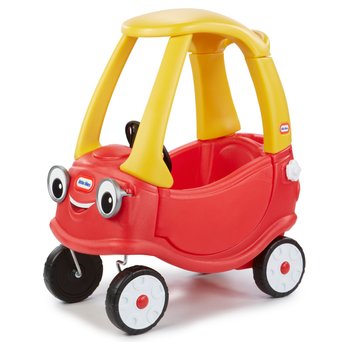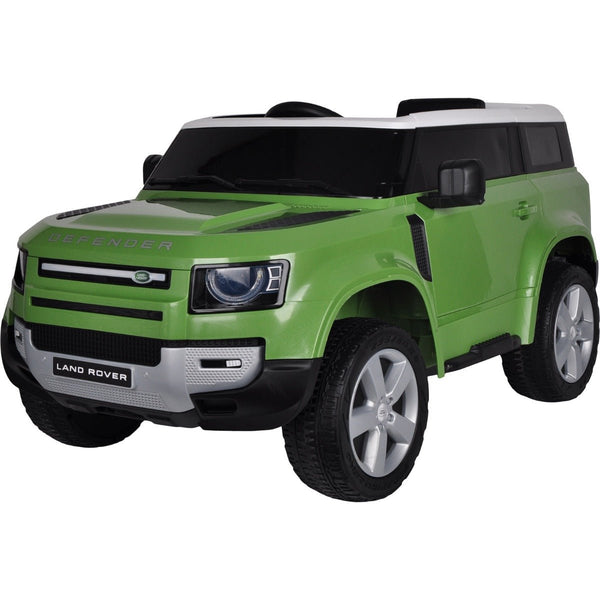Great News To Choosing Kids Ride On Cars
Wiki Article
What Ride-On Safety Features Should I Consider? Cons And Pros
It is essential to consider safety features when selecting the best car for your children. These features will help ensure that they are safe and comfortable during playtime. Seat Belts, for example, are a safety feature that is important to consider.
Seat belts help protect your child and decrease the chance that they may fall from the vehicle or get removed from the vehicle. The seat belts add an additional layer of protection to your child, especially in the case of abrupt stops or sharp turns.
Cons – Some ride-ons cars specifically intended for children don't have seat belts. Also, some children find seatbelts to be uncomfortably tight and uncomfortable. This could cause them to be reluctant to use them.
Sturdy Construction
Pros: A robust ride-on vehicle made of top-quality materials will last longer and is less likely to fail. This ensures the safety and security of your children. It can withstand all the playtime rigors and still provide stability.
Cons - Strong construction usually comes at a higher price that makes it more expensive for certain families. The weightier materials used can reduce the mobility and maneuverability.
The Low Center of Gravity
Pros - Ride-on cars with low centers of gravity are less vulnerable to tipping over, reducing the risk of accidents and injuries. They provide better stability and balance, especially when turning or performing maneuvers.
Cons - Certain ride-on cars with a low center of gravity may sacrifice ground clearance or off-road capabilities which limits their use in certain situations.
Child Remote Control
Pros: Ride-on vehicles that are remotely controlled allow parents to monitor and supervise their child while they play. This is an added layer of safety and security. Parents can intervene if an emergency occurs, navigate difficult terrain, or avoid collisions.
Cons: Controlling parents using a remote may limit the autonomy and independence of children as they depend on parental help and guidance while playing. Additionally, devices that can be controlled remotely may be more expensive than models with manual controls.
Speed Limiters
Pros: Ride-on vehicles that have speed limits or variable settings for speed permit parents to control the maximum speed of their vehicle to reduce collisions and accidents. They can gradually increase speed of the vehicle as a child develops confidence and skill.
Pros - Some kids may grow out of the lower speed settings quickly, causing anger or dissatisfaction from the ride-on cars. Also the speed limiter might not be available on all models. Also, it could require an extra feature or accessory.
Safe Start Technology -
Pros: Safe start guarantees smooth and steady stops and starts of the car ride, minimising the risk for abrupt movements or jerks that could startle a child or cause them to be unsteady. It provides a more relaxing and safer ride.
Cons - Ride-on cars with safety start technologies could be more costly than basic models without this feature. Moreover, some children might find that gradual acceleration and deceleration is not as entertaining or enjoyable than rapid starting and stopping.
Visibility Enhancements
Pros - Ride-on cars fitted with visible enhancements such functioning headlights, reflective materials, or taillights, increase the visibility of the vehicle. This is especially the case in dimly lit environments or under certain conditions. The vehicles are more noticeable, which improves safety.
Cons - The greater visibility may cause the battery to drain more quickly, or increase the level of complexity. This can increase the chance of issues or maintenance.
You can guarantee your child's safety by weighing the pros and cons of these options. Follow the best kids cars for more recommendations including car toy car toy, ride on digger, cars pedal car, riding digger, childs car toy, ride a toy, childs car toy, childrens electric cars, toy cars, childs electric ride on car and more. .

How Do You Keep And Assemble A Kid's Ride-On Vehicle?
It is common for kids ride-on cars to require some assembly, along with regular maintenance to maximize performance and safety. Here are the assembly and maintenance requirements for children's ride on cars.
The majority of vehicles with ride-ons come partially assembled and require some assembly. Attaching the components, such as wheels, steering wheels, and seats according to the specifications of the manufacturer, is typical.
Be sure to follow the assembly instructions carefully and ensure that every component is securely secured. Make use of the tools and hardware to complete assembly.
Cleaning -
It is essential to wash the ride-on vehicle regularly in order to maintain its appearance and function. Use a soft, spongy cloth or sponge soaked in moderate soap and water to wash off the exterior surfaces, removing dirt, dust, and other debris.
Special attention should be paid to areas that are prone to accumulation, such as tires, wheels and the undercarriage. Utilize a toothbrush and brush to clean the hard-to-reach places.
Beware of harsh chemicals and abrasive detergents. They can damage electronic parts or the paint on your ride-on vehicle.
Battery Care
Battery care is crucial for any ride-on powered by rechargeable batteries. A proper battery maintenance program ensures performance and extend the battery's lifespan. Here are some suggestions on battery care.
The battery must be fully charged before and after each use to maximize runtime.
Avoid overcharging batteries or leaving them hooked up to chargers for prolonged time. This could damage batteries and decrease their lifespan.
When not in use, store the ride-on car and the battery in a cool, dry location away from direct sunlight.
Periodically inspect the battery terminals for corrosion or damage, and clean them using a terminal cleaner or wire brush If necessary.
Replace the battery when it's no longer holding a charge or if there are signs of damage.
Tire Maintenance -
Check your tires regularly for signs that they're losing pressure, damaged or damaged or worn. Use a bicycle compressor or air compressor to fill the tires to the recommended pressure.
Examine the tread pattern on your tires to identify foreign objects and debris that may cause flats or punctures. Repair or replace damaged tires by taking out any obstructions.
Lubricate wheel bearings and axles regularly to reduce friction.
Periodic replacements or repairs
Even with regular maintenance, ride-on vehicles may require occasional repairs or replacement parts due to wear and tear or damage caused by accident.
Keep an eye out for signs of malfunction or deterioration for unusual sounds or power outages, or erratic behavior. Consult the manufacturer’s instructions or contact Customer Support to assist in troubleshooting.
To avoid further damage replace worn-out or damaged parts as soon as possible to ensure the safety of your equipment and its functionality.
Follow these assembly guidelines as well as maintenance guidelines will ensure that your child will have hours of fun and safe playtime. See the best go here for Audi ride on car for website recommendations including toy car toy car, electric ride on, toy ride, toy car toy car, childrens electric cars, two seater electric cars, electric ride on cars, toy a car, car electric ride on, toy cars toy car and more. .

What Types Of Childrens Remote Control Cars Are Available? What Are Their Advantages And Disadvantages?
The diverse sizes, designs price, styles, and models of remote control children's car can be found to suit the requirements and budgets of all. Below is a list of various types of remote control cars for kids, with the dimensions, cost ranges, and pros and con.
Electric RC Cars - Battery-powered remote-controlled cars that can be used for outdoor and indoor use. There are a variety of types of RC cars available including trucks, buggies and sportscars.
Nitro RC Cars - Gas-powered remote-controlled cars that have greater speeds and performance, however they require more care and experience to run. They tend to be larger and more costly than electric RC car.
Scale Models (Remote-controlled replicas) Miniatures of real-life vehicles like cars, trucks or planes. Scale models are available in a variety of sizes, from 1 10 to 1-24 With larger scales offering more detail and realism.
Sizes -
Remote control cars for children come in a variety of sizes, ranging from tiny micro-sized models to large-scale replicas. The size of the vehicle will affect the performance, speed and handling qualities.
Micro-sized vehicles are compact and lightweight. They are ideal for indoor use, especially with young children. The larger cars offer more power and durability, making them suitable for off-roading and racing.
Prices
The cost of remote-controlled cars for children vary based on factors like size, features, brand and the quality of construction.
The RC cars that are small-sized and electric range from $20 to $100, while larger-scale nitro and electric cars can range from $100 to $500 or more.
Scale models, top-quality hobby RCs can cost anywhere between several hundred dollars up to a whopping $1,000, depending on the detail level and the performance.
Pros and Cons
Pros -
Entertainment - Children's remote controlled automobiles can bring hours of fun and entertainment for both children and adults.
Skill development Learning to drive an RC vehicle can help children improve their spatial awareness as well as hand-eye coordination.
Social Interaction. RC cars encourage social interaction, and can be enjoyed by both friends and relatives.
Aftermarket parts such as upgrades, accessories, and other products from the aftermarket can be used to customize numerous RC cars and increase their performance.
Cons
Cost – High-quality models that have advanced features, such as hobby-grade cars, can be expensive.
Learning Curve - Operating an RC Car requires practice and ability as well as younger children could struggle initially.
Maintenance is a must for owners of RC cars. They should regularly clean or lubricate their vehicles, as well as make repairs or replace parts.
Safety Concerns - RC automobiles can pose dangers to safety, such as collisions, falls, as well as electrical dangers, if not used responsibly and under adult supervision.
In general, remote-controlled kids' vehicles can be an enjoyable and educational experience for kids of all ages. However, when choosing the right model for your child, it is important to take into consideration factors like cost size, dimensions, features and security. Hobby-grade RC models are suited to older children or people who enjoy. Less complicated models are better for beginners and younger children. Take a look at the recommended Audi kids car kidscars.co.uk news for more tips including ride on digger, electric rideons, toy in car, kidscars, car on ride, toy car for car, childrens electric ride on, ride on car, childs electric ride on car, a toy car and more. .
